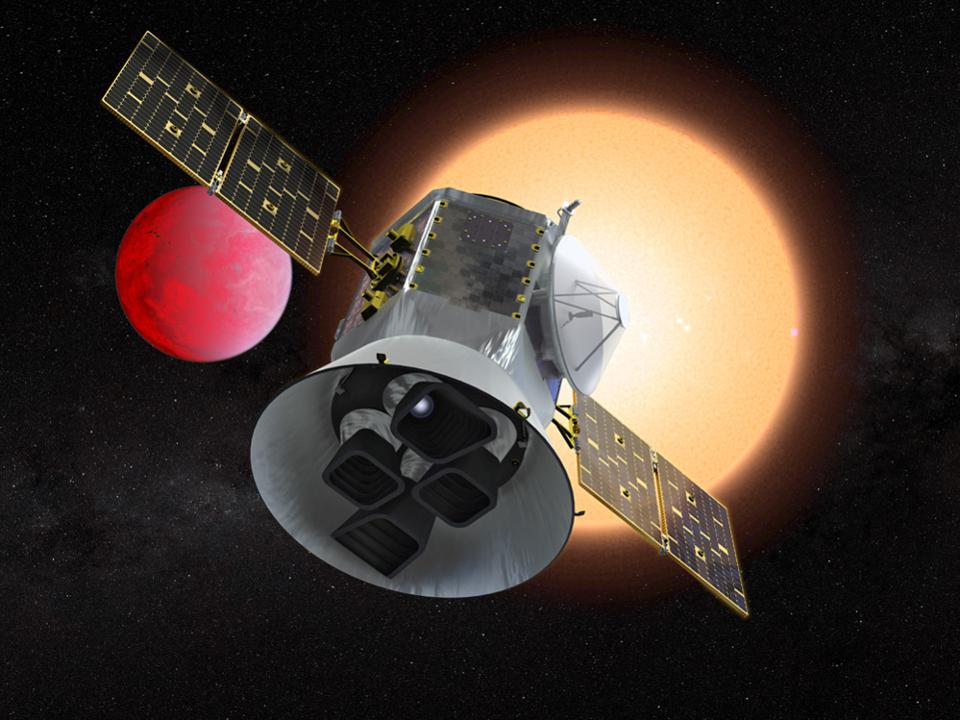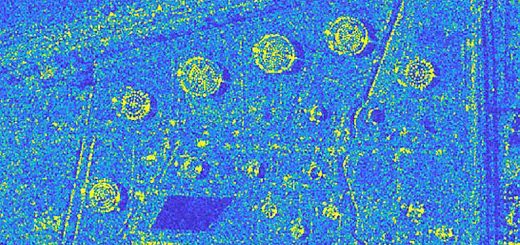NASA’s TESS Telescope Should Spot Many ‘Star Wars’-Like ‘Tatooines’
NASA’s next extrasolar planet-hunting mission should detect dozens of circumbinary, Tatooine-like systems, in which a real-life planet circles two stars instead of one, say astronomers.

The NASA TESS Mission will discover new Earths and super-Earths in the solar neighborhood. (Photo by forbes.com / 13 Jan 2018)
TESS (the Transiting Exoplanet Survey Satellite) — due for a March launch atop a SpaceX Falcon 9 rocket — will survey some 20 million stars of which 500,000 will be eclipsing binaries, Vesselin Kostov, a postdoctoral fellow at NASA Goddard Space Flight Center, told me.
The hope is that TESS will detect more real-life circumbinary star systems — not unlike Tatooine, the fictional go-to circumbinary prototype featured in the original “Star Wars.” To do that, TESS will first look for the eclipse of two closely orbiting binary stars. Then it will look for the telltale stellar dimming caused by planets transiting across the faces of their closely-spaced stellar parents.
We expect TESS to find on the order of a hundred such circumbinary planets, says Kostov. Depending on the properties of the discovered systems, he says TESS will determine their orbital periods, sizes, planet mass, and potential orbital eccentricity (or the amount these planets’ solar orbits deviate from a perfect circle).
Yet, initially, it was thought that planets in any sort of binary star system would be subject to such chaotic orbits that they would be unable to maintain stable climates, much less life.
But for years now, Paul Mason, a New Mexico State University astronomer, and colleagues have been touting such circumbinary stars for their potential in harboring what he terms super-habitable planets. That is, planets on which conditions are even more favorable for life than our own Earth.
Planets orbiting binary stars may have an advantage, Mason told me. The gravitational tides of one star acting on the other cause the spins of the stars to slow down sooner than their single star counterparts, he explains. These stars mutually slow each others’ rotation, thereby causing a reduction in detrimental stellar activity.
Mason notes that this effect seems optimized for combinations of solar-like (G-type) twins or a G spectral type star coupled with a K type star. And if the binary configuration is “just right,” he says then the conditions will be even better than Earth.
“Stars that would be uninhabitable if single, would be habitable if paired with a companion star with a suitable separation,” said Mason.
A Venus-like planet with less magnetic protection than Earth could potentially maintain habitability in such an enhanced habitability system, Mason and colleagues noted in a paper that appeared in The Astrophysical Journal. Such a system, they note, might even have multiple habitable planets .
Depending on the masses of the two stars and the eccentricity of their orbits, Mason says this improved habitability would work for stars that orbit each other every 15 to 50 days. In contrast, binary stars with shorter than 15-day orbital periods around each other have a marked increase in their x-ray and extreme ultra-violet activity over the life of the stars, says Mason. Binaries with larger than 50-day separations, he says, simply do not have circumbinary habitable zones.
How do such circumbinaries form?
All stars form from fast-spinning dense protostellar molecular clouds — usually found in dense star-forming regions like the nearby Orion Nebula. In such clouds, normally, single stars form from fragmentation of dense stellar cloud cores. However, Mason says that about a third of the time, faster-spinning molecular clouds collapse and fragment into two protostellar pieces. It’s thought that circumbinary stars form from this smaller subset of fast-spinning, star-forming clouds.
NASA’s Kepler telescope was able to detect nearly a dozen planets around circumbinary stars. To date, there have been no detected circumbinary super-earths. Instead, most of the circumbinary planets Kepler detected are Neptune to Saturn mass objects. However, if they’re out there, TESS should be sensitive to smaller mass circumbinary planets.
“From our work on the Kepler circumbinary planets, some have better than earth-like conditions, and others much worse,” said Mason. “But it’s the quality, not the quantity, of circumbinary environments that make our results interesting. A binary may even harbor several habitable planets.”
As for what TESS will bring to the table?
Mason says at least some portion of TESS’ newly discovered planets should be what he terms, ‘super-habitable’ circumbinary planets.
Yet if strictly looking for lower mass binaries, such as Red M-spectral type dwarfs, the expected fraction of circumbinary planets would be less than ten percent, Vladimir Airapetian, a senior astrophysicist at NASA Goddard Space Flight Center, told me. And of this 10 percent, less than three percent would likely be habitable.
Even so, with an estimated 150 billion M-dwarfs in our galaxy alone, some 5 billion circumbinary stars would likely harbor habitable planets and/or moons.
That’s because as he points out, metallicity ultimately creates a solar system’s complex chemistry in its planets’ atmospheres. This, in turn, supplies the essential raw molecules of life.
Although it’s not clear why, Airapetian says that binary stars are significantly less metal-rich than their single star counterparts. But he notes that a star’s metallicity is a major factor in whether it’s circumstellar disk will form earth-like planets. Airapetian notes that metals are vital to the formation of earth-like planets since, among other things, they foster the sort of active geophysics needed to help form atmospheres and complex molecules.
On the other hand, Airapetian says, such lower metallicity M-dwarfs would be less active and produce less x-ray and ultraviolet radiation simply because they would have less metals, including iron.
And among other things, TESS will build on Kepler’s legacy as a game-changing planet hunter.
“TESS will find hundreds of terrestrial-type planets around M-dwarfs and solar-like stars in our immediate neighborhood,” said Airapetian.
Source: Bruce Dorminey , CONTRIBUTOR – (forbes.com) – JAN 13, 2018


















